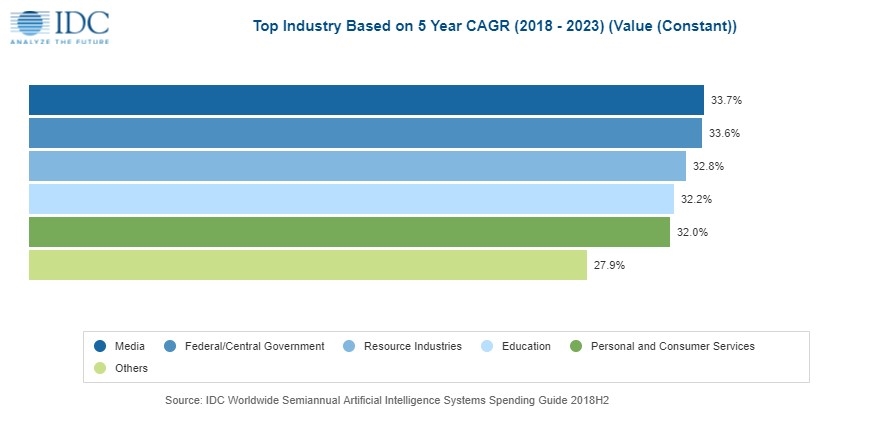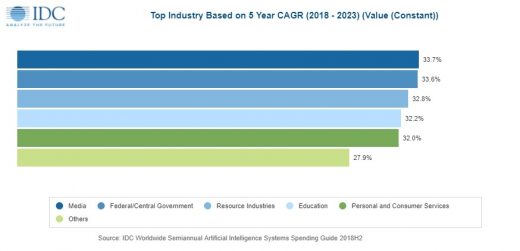With AI poised for growth, marketers need more clarity from vendors
Understanding the differences between the facets artificial intelligence will help you make better-informed martech investments.

Marketers from across all industries have widely embraced tools and solutions boasting artificial intelligence (AI), machine learning (ML) and deep learning (DL) capabilities — but marketing is suffering from definition murkiness. These phrases are often used interchangeably by martech vendors to describe their solutions, leading to confusion around their actual meanings — and disproportionate expectations for users.
Business spending on AI, DL and ML will grow to nearly $98 billion by 2023, according to an International Data Corporation (IDC) forecast. Establishing an understanding of the fundamental differences between these terms and knowledge of how they work together will be key for marketers as their organizations increase investments and use of these technologies. “A high-level understanding of AI and ML is important because marketers need to be able to avoid being a victim of ‘AI-washing’,” said Mike McGuire, vice president analyst at Gartner for Marketers.
AI is an umbrella term. Artificial intelligence is a broader concept that encompasses machine and deep learning. The term describes how tools mimic the qualities of human cognition. AI is the ability to acquire and apply knowledge within an application or program, simulating natural intelligence to solve complex problems for the end-user.
“Marketers should be careful not to get caught up in buzzwords without understanding exactly what they’re investing in,” said Matt Nolan, senior director of product marketing, decision sciences at Pegasystems. “AI is really an umbrella term for a broad scope of intelligent technologies that include natural language processing (NLP), image recognition, speech recognition, biometrics, automation, deep learning, etc.”
A common misconception about AI is that it is a system, but AI is actually implemented within a solution.
Machine learning is an element of AI. Machine learning refers to algorithms that are designed to learn from data generated by specific tasks, perform calculations and solve problems to improve performance without being explicitly programmed by people to do so. Machine learning allows applications to dynamically modify themselves based on real-time data without any human assistance or intervention.
“ML is a discipline of AI. It uses algorithms to make connections and identify patterns in customer data, sales data etc. collected by the business,” said McGuire. “AI is a considerably broader concept and comprises many techniques and disciplines.”
ML algorithms are designed to interpret structured or labeled data to produce further data, using the outcomes to improve future predictions. The algorithms can also be retrained through human intervention if the output isn’t the desired one.
“ML is a foundational category of technology under that AI umbrella, that trains algorithms to make decisions and predictions on their own by ‘learning’ as they accumulate more and more data,” said Nolan. “Of all the technologies, ML is probably the most relevant and impactful for marketers right now. They can use ML to calculate likelihood propensities for each customer, across all their different offers, messages and creative — increasing their relevance overnight, at a scope and scale that nobody’s ever seen before.”
Deep learning is the next stage of machine learning. Deep learning consists of layered algorithms that provide unique analysis and interpretation of the same data. These networked algorithms, called artificial neural networks (ANN), aim to imitate the human brain’s response to data.
The difference between machine and deep learning depends on how data is presented to the system. Machine learning requires structured data, while deep learning relies on the algorithmic layers of ANN. Deep learning networks do not require structured or labeled hierarchy to classify data, nor do they require human intervention.
Understanding these key differences between each facet of artificial intelligence can help marketers ask the right questions of vendors who are selling these solutions. While many platforms brag of their “AI-driven capabilities,” much of what is available to marketers is self-contained machine learning. It’s important to be able to differentiate in order to set expectations and truly ensure full use of the capabilities across the marketing technology stack.
“At best, confusing the terms ‘AI’ and ‘ML’ is sloppiness, added McGuire. “At worst, vendors are trying to dress up advanced analytics capabilities with the cooler hot buzzwords of the day.”
Marketing Land – Internet Marketing News, Strategies & Tips
(10)



